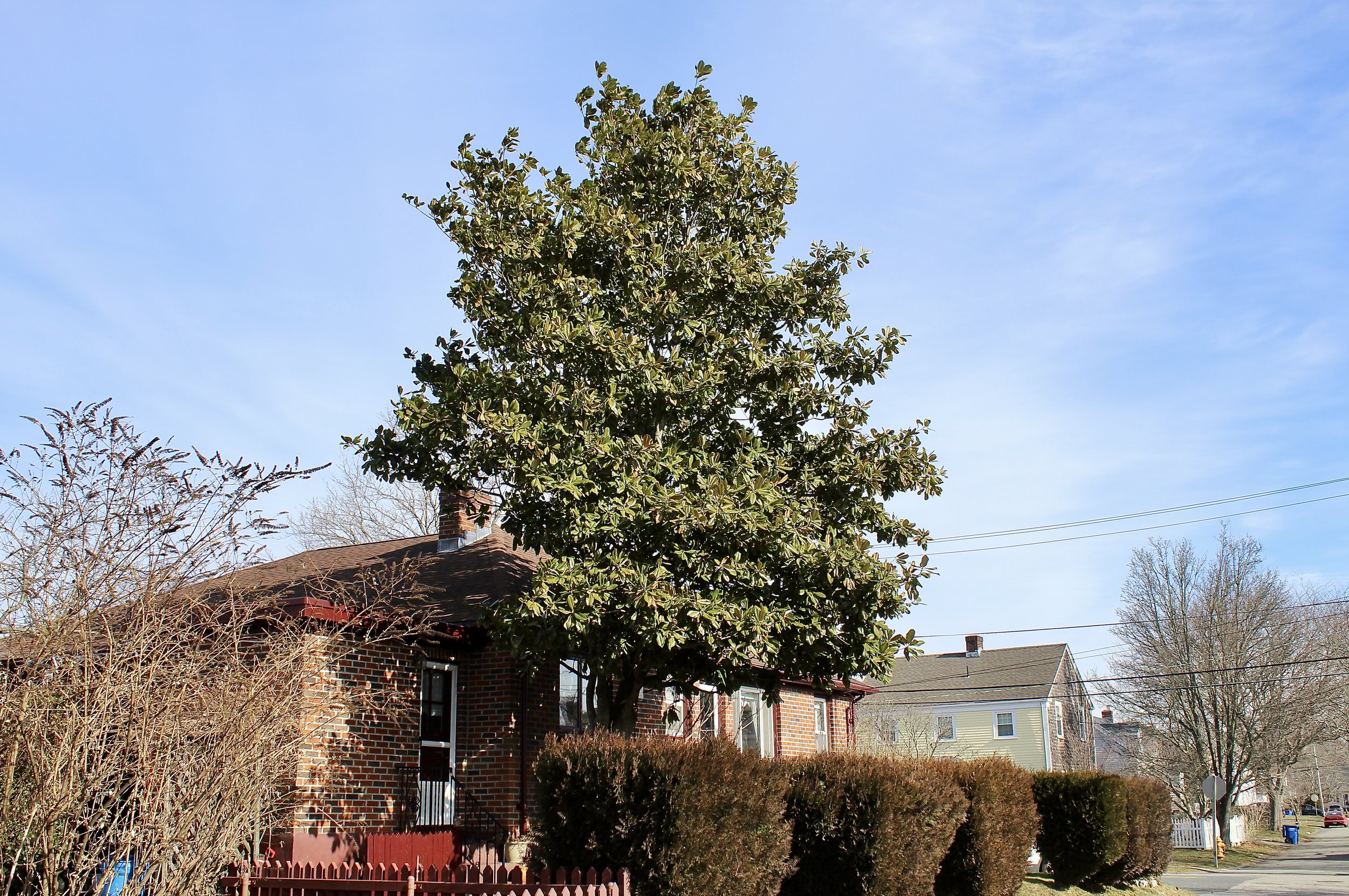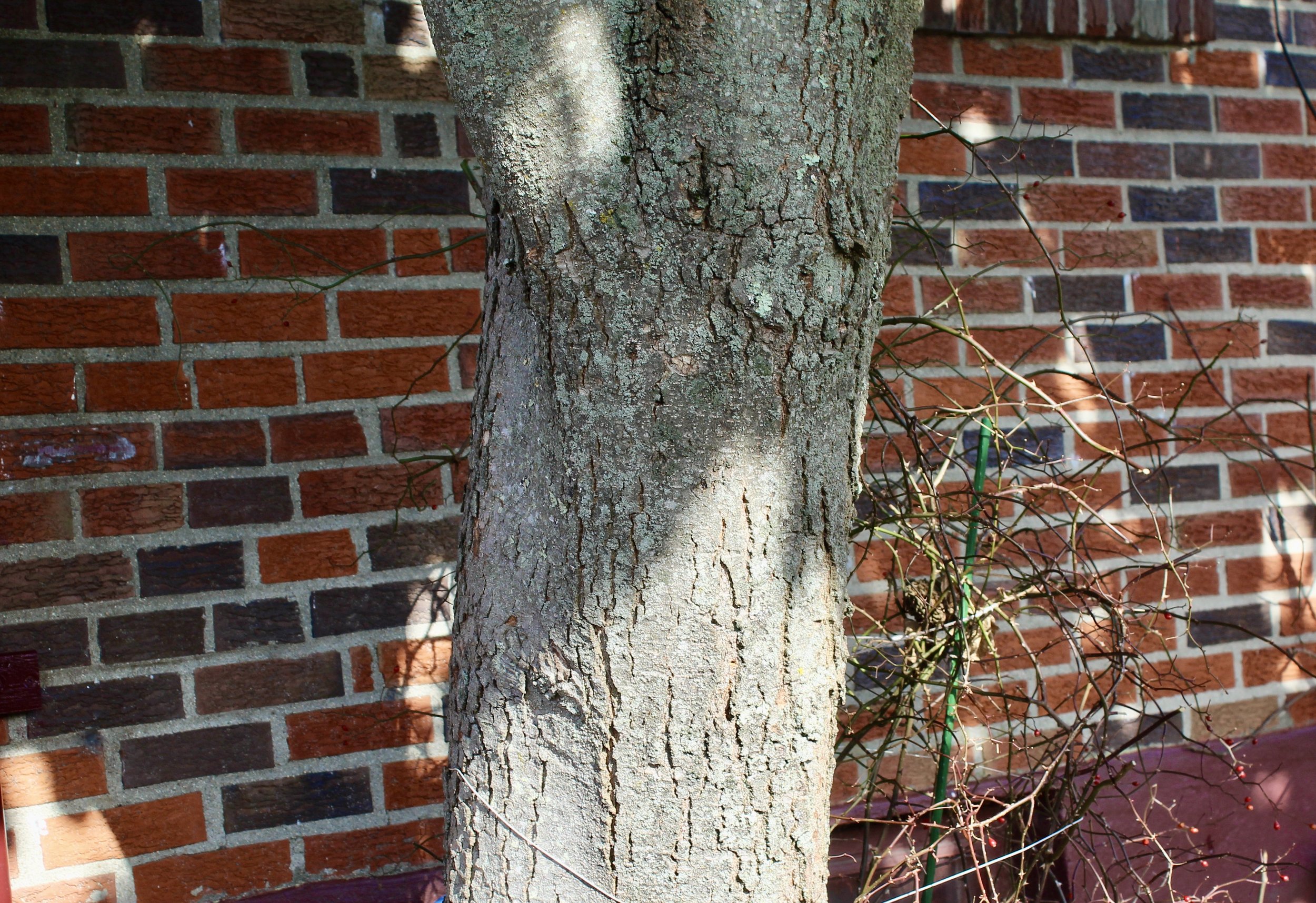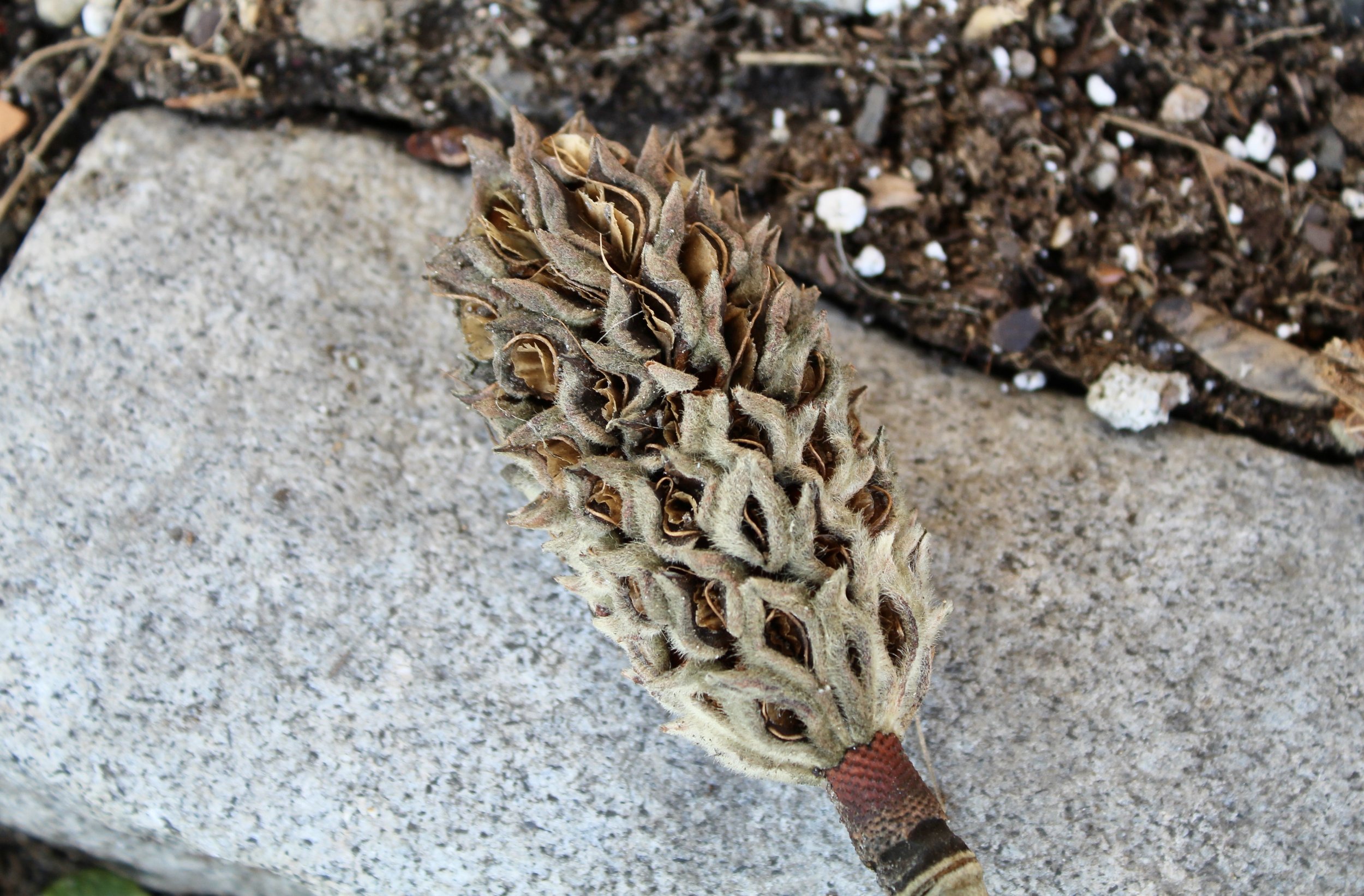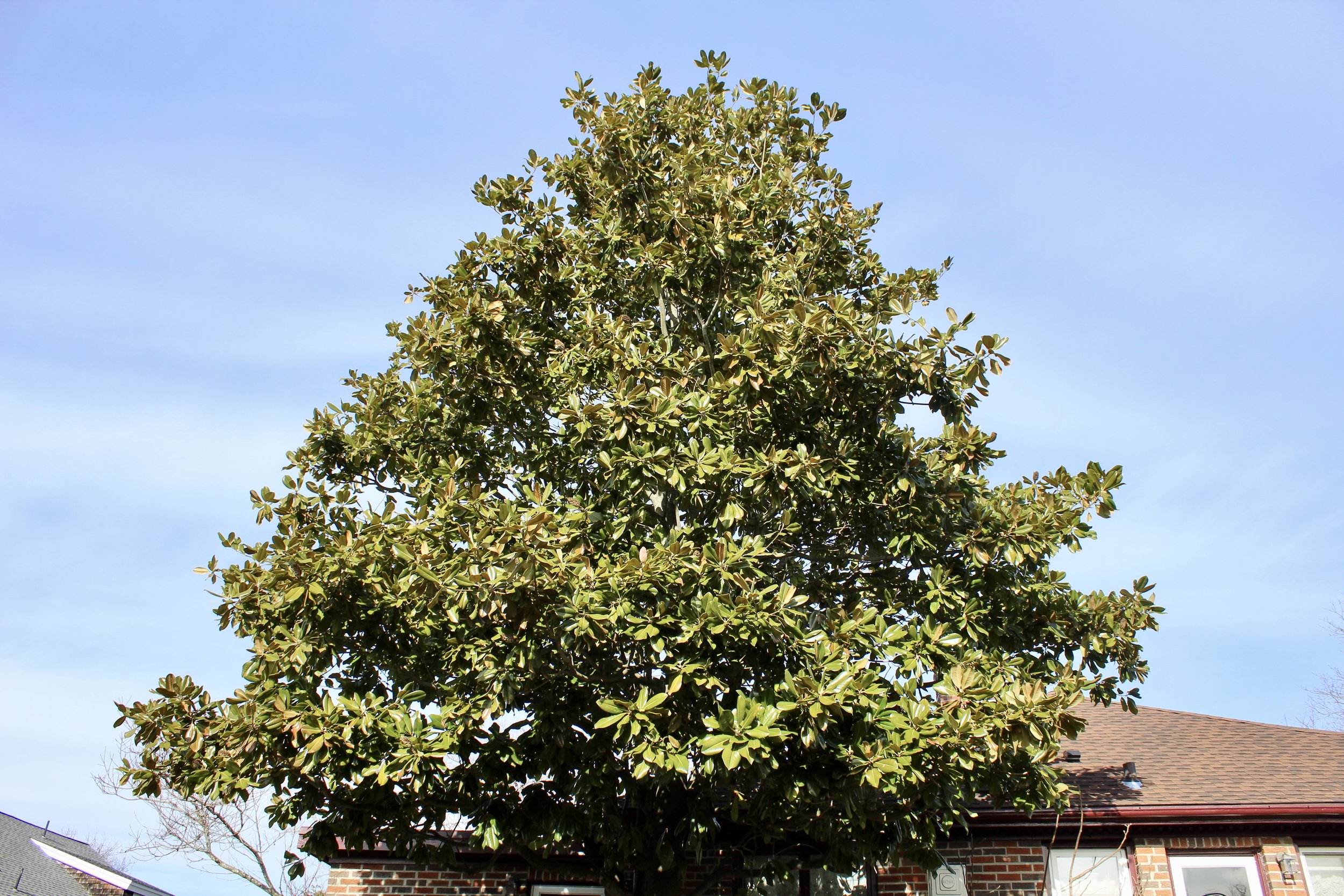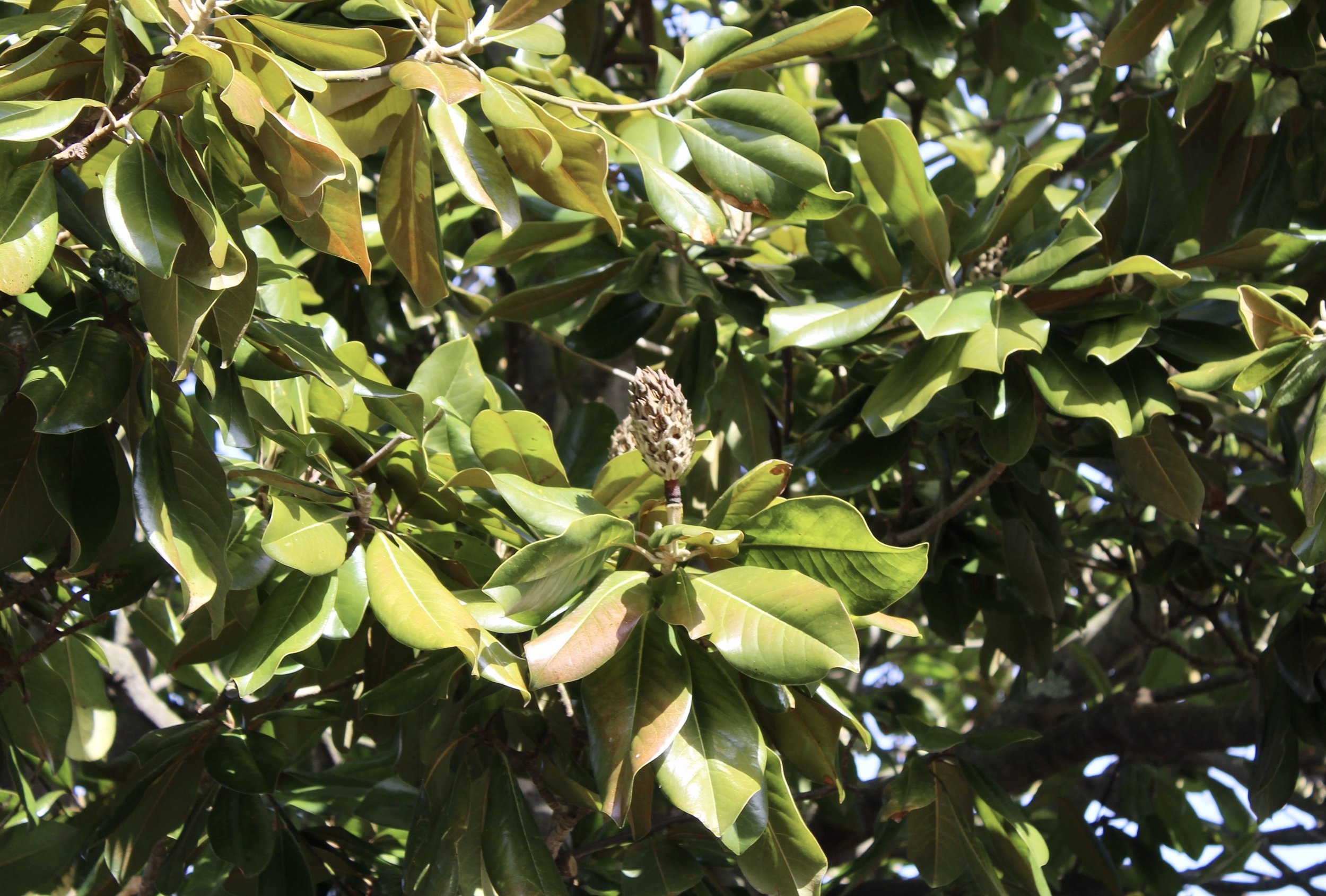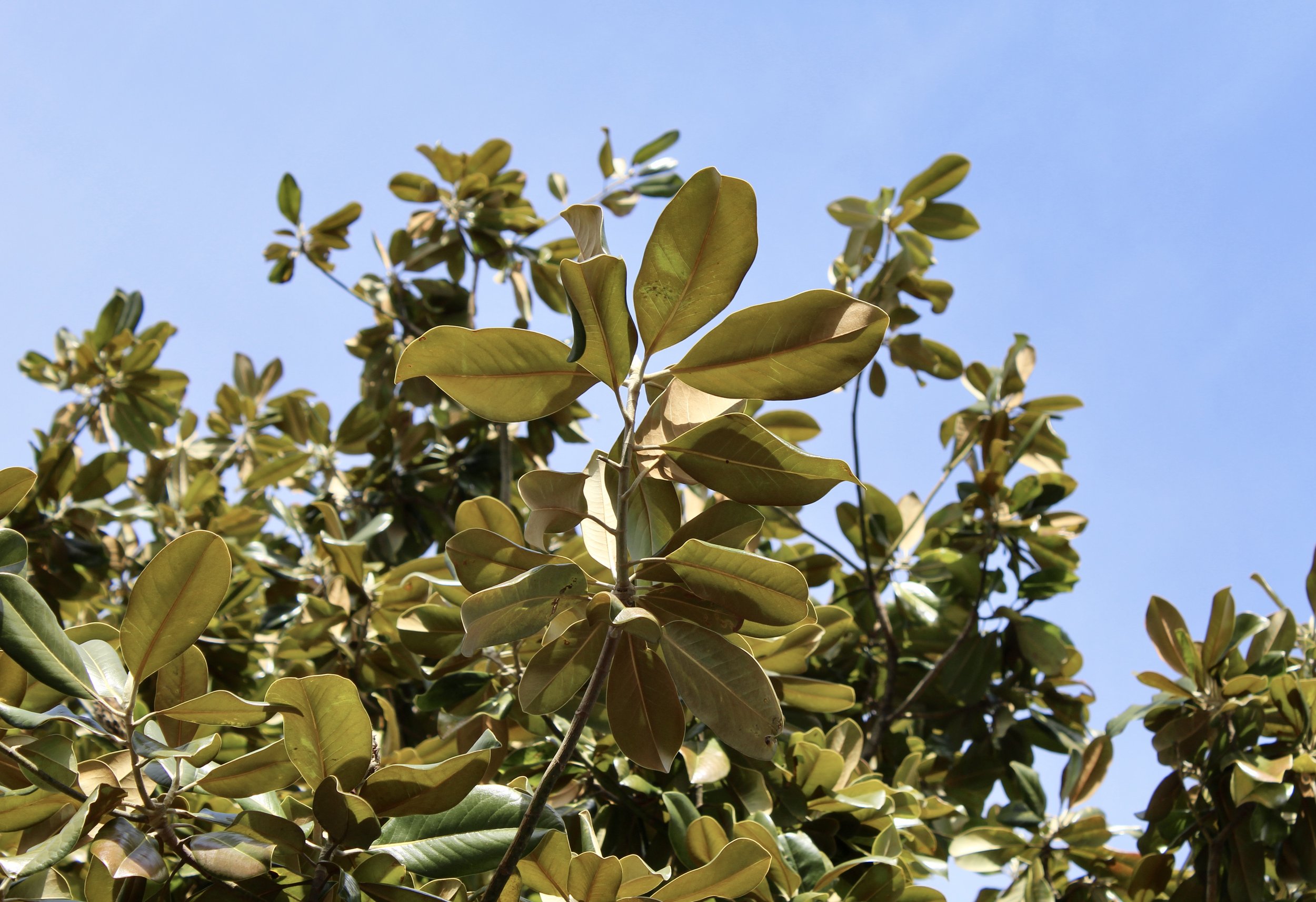A Southern Magnolia’s Journey to Newport
Camera ready, I hopped out of my car and approached the magnolia. As I neared, I examined the plant intently, determining which variety the tree might be. Most southern magnolias (Magnolia grandiflora) that I’ve witnessed in RI are cold hardy varieties such as ‘Bracken’s Brown Beauty’, ‘Edith Bogue’, and ‘DD Blanchard’, as typically seedling plants don’t perform well with the harsh New England winters. However, the characteristics of this tree didn’t match those varieties. The plant lacked the fuzzy orange-brown indumentum of Brackens and DD, and the leaves were shiny light green, large and tapered at the ends, whereas Edith’s foliage is dark green, curled and more elliptic. I knocked on the owner’s door, asking permission to take photos. She happily agreed, commenting on the trees lovely, fragrant flowers through the summer. As I snapped away, I noticed the abundance of large aggregates, already bare of shiny red seeds. Given the size of the fruit, the flowers must be quite large, even for the 6-10’’ flowers M. grandiflora produces. The tree seemed unique to me, and so I returned to ask the woman the story of the tree.
Many years before, her mother had a garden in southern Virginia, and had grown magnolias there from seed. She had grown one plant to size, and brought it with her to Rhode Island, and planted it where it exists today. The owner didn’t tell me the exact age, only that the tree had been there “for many years” and had “grown and flowered beautifully”. Later, a friend would tell her this tree shouldn’t have survived the northern climate. This was extremely exciting to hear, as spontaneity had led to a remarkable occurrence. A seedling tree had grown to be the most successful of its species in Newport. I didn’t feel the cold anymore as I thanked her and turned on my way. I thought about Edith Bogue, a woman who in 1920 received a seedling from Florida and grew it successfully in Montclair, NJ. In a way, the stories are similar, with a plant brought to the perils of the north, only to find a way to beat the odds and be successful. A one-of-a-kind plant grows on Michael Terrace, thanks to the ingenuity of a gardener, and the spontaneity of a seed.

